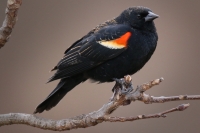Throughout the last year, the Urban Ecology Center has been challenging people to get outdoors and make observations in nature and we challenge you again this spring to get outside and document phenology (responses of plants and animals to changes in seasonal and climate factors)! One of the best mobile phone applications for observing and identifying living things in nature is a free, easy-to-use app called iNaturalist. iNaturalist has an unbelievably-powerful image recognition algorithm that also uses location info to help identify plants, animals, and to a lesser extent fungi, with surprising accuracy. Members of the iNaturalist community can see others’ observations, and suggest identifications to help narrow down the species in question. iNaturalist is my #1 favorite app, and a great way to get started learning about nature while you spend time outdoors! Please search and then join our “Spring Phenology in Milwaukee 2021” project on iNaturalist. Here’s a helpful guide to get started with iNaturalist.
To join the correct project in iNaturalist, click the “More” button in the bottom right corner of the app screen, then click “Projects.” You will need to search “Spring Phenology in Milwaukee 2021” and select the one that has the Urban Ecology Center logo, then click “JOIN.” Now, when you go to make your next observation, you will see this project under “Projects” at the bottom, and any species you submit on this list will be automatically added!
We have an Urban Ecology Center “Challenge” for each season, encouraging people to look for species that are often seen that time of year. For our winter challenge, we had 120 observations totaling 21 species throughout Milwaukee! Our most observed species with 59 observations go to the Eastern Gray Squirrel, followed by the Northern Cardinal. In third place was the Coyote, with 8 observations! These animals are all-year-round, active residents of Wisconsin. We also observed birds that migrate here from the far north for the winter, including the Dark-eyed Junco and even a Snowy Owl!
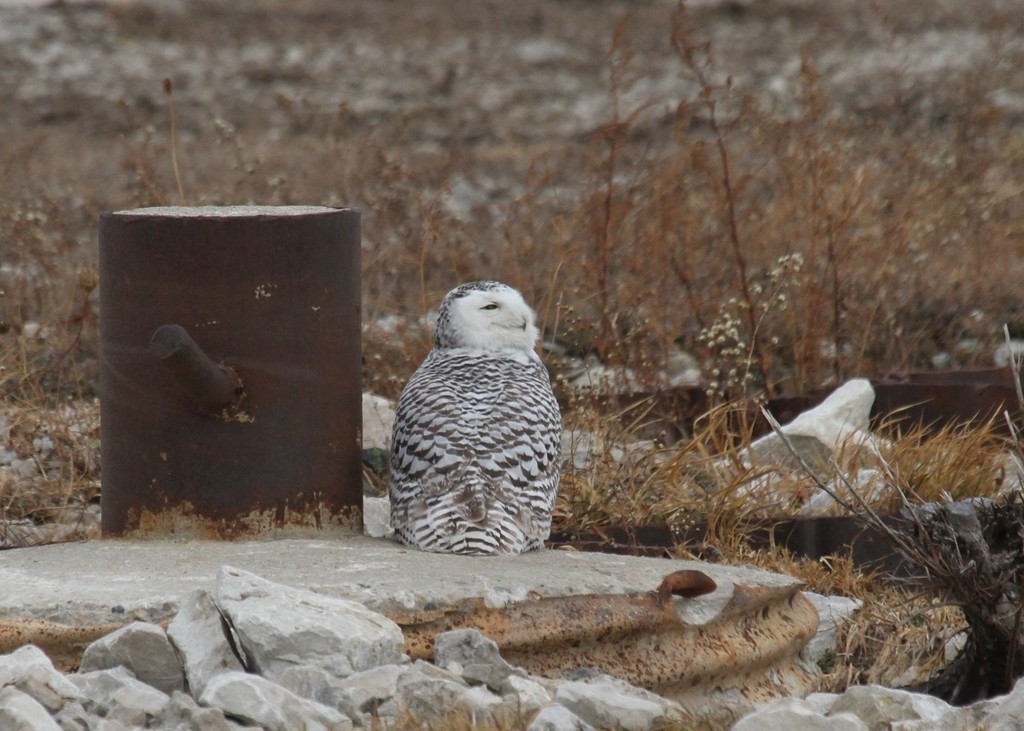
Snowy Owl. Photo credit: ritafw, iNaturalist
One of my favorite plants—of any season—is the Eastern Skunk Cabbage, 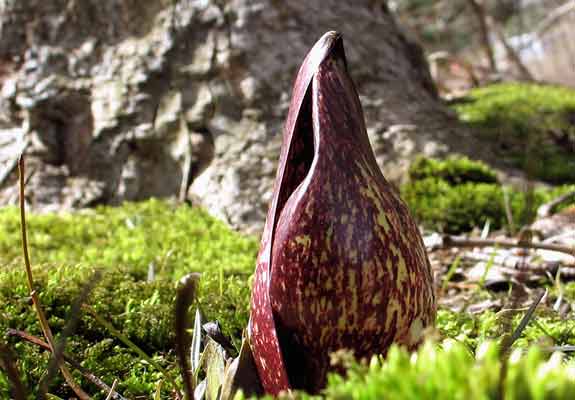 which first sprouts in late winter and can be found in the woods in patches of soil that are consistently wet and boggy. This native plant resembles something that you might find in a deck of Pokemon cards or a science fiction movie taking place on another planet. The reddish “spathe” of these plants first emerges from the ground, often poking through the snow. It soon opens, to reveal the yellow “spadix,” which is a complex of tiny flowers. An adaptation that allows these plants to thrive in the frigid late-winter temperatures is that they are thermogenic, meaning they produce their own heat, one of only a few plants to do so.
which first sprouts in late winter and can be found in the woods in patches of soil that are consistently wet and boggy. This native plant resembles something that you might find in a deck of Pokemon cards or a science fiction movie taking place on another planet. The reddish “spathe” of these plants first emerges from the ground, often poking through the snow. It soon opens, to reveal the yellow “spadix,” which is a complex of tiny flowers. An adaptation that allows these plants to thrive in the frigid late-winter temperatures is that they are thermogenic, meaning they produce their own heat, one of only a few plants to do so. 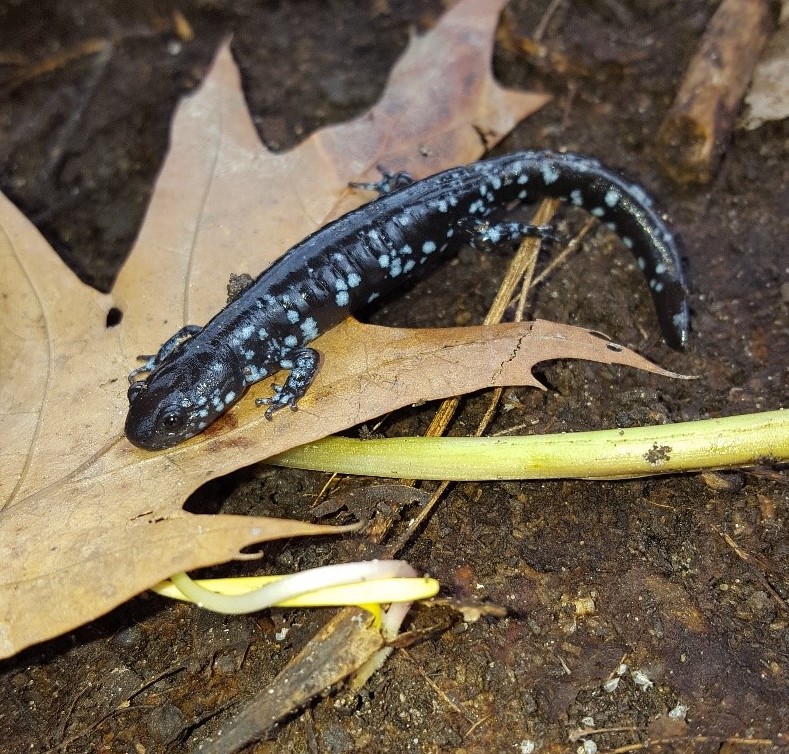 This heat is enough to melt the snow around the plant and attracts other early-emerging critters like salamanders. Later in the spring, huge green leaves will appear before the plant goes dormant. Skunk cabbage is an ephemeral plant, meaning that it only persists for a short time, before dying back down to its roots and waiting to emerge again until the end of next winter.
This heat is enough to melt the snow around the plant and attracts other early-emerging critters like salamanders. Later in the spring, huge green leaves will appear before the plant goes dormant. Skunk cabbage is an ephemeral plant, meaning that it only persists for a short time, before dying back down to its roots and waiting to emerge again until the end of next winter.
Photo of the Skunk Cabbage by Sue Sweeney & Photo of the Blue Spotted Salamander by Tory Bahe
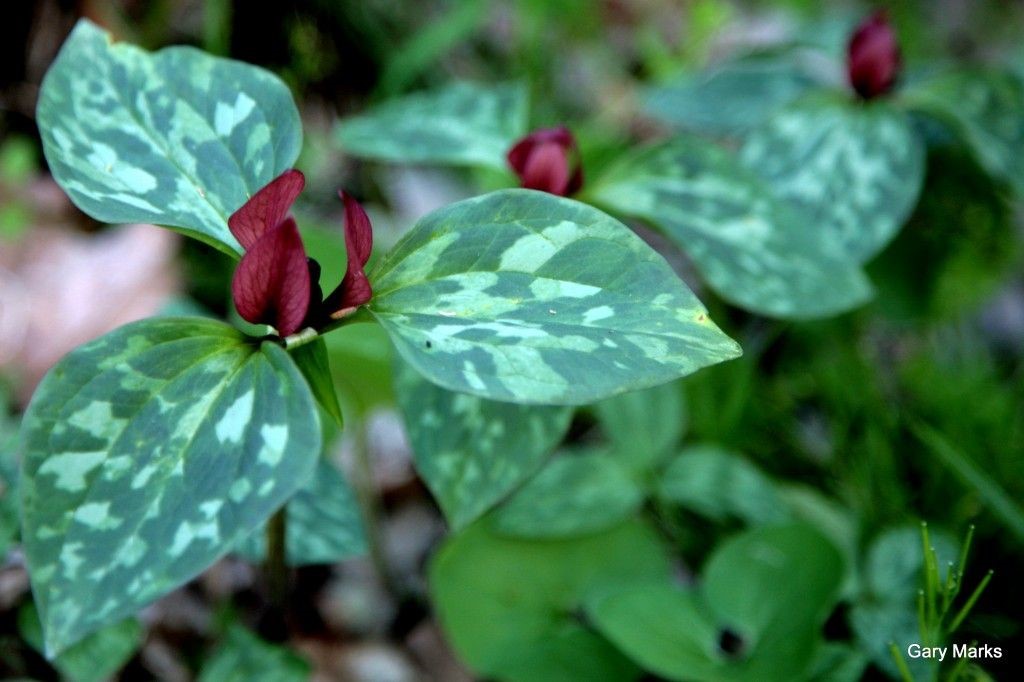
There are many other ephemeral plants that are on full display in the springtime. Some of the most interesting flowers are spring ephemerals, like these humorously-named Dutchman’s breeches and many species of Trillium. 
Here is a list of species on the Spring Phenology Challenge for Plants:
Eastern Skunk Cabbage (Symplocarpus foetidus)
Dutchman’s breeches (Dicentra cucullaria)
Pasqueflower (Pulsatilla vulgaris)
Bloodroot (Sanguinaria Canadensis)
Boxelder Maple (Acer negundo)
Cut-leaved Toothwort (Cardamine concatenate)
Hepaticas (Genus Hepatica)
Marsh Marigold (Caltha palustris)
Mayapple (Podophyllum peltatum)
Carolina Spring-Beauty (Claytonia caroliniana)
Trilliums (Genus Trillium)
Yellow Trout Lily (Erythronium americanum)
Virginia Bluebells (Mertensia virginica)
Virginia Waterleaf (Hydrophyllum virginianum)
Wild Strawberry (Fragaria vesca)
Canadian Meadow Garlic (Allium canadense)
Willow Family (Family Salicaceae)
Common Blue Violet (Viola sororia)
Animals:
American Robin (Turdus migratorius)
Bats (Order Chiroptera)
Salmons, Trouts, and Whitefishes (Family Salmonidae)
Brown Creeper (Certhia Americana)
Mourning Cloak (Nymphalis antiopa)
Common Grackle (Quiscalus quiscula)
Eastern Phoebe (Sayornis phoebe)
Butler's Garter Snake (Thamnophis butleri)
Eastern Chipmunk (Tamias striatus)
Red-winged Blackbird (Agelaius phoeniceus)
Great Blue Heron (Ardea Herodias)
Hermit Thrush (Catharus guttatus)
Killdeer (Charadrius vociferous)
Spring Peeper (Pseudacris crucifer)
White Sucker (Catostomus commersonii)
Yellow-bellied Sapsucker (Sphyrapicus varius)
Blue-spotted Salamander (Ambystoma laterale)
Eastern Bluebird (Sialia sialis)
New World Warblers Family Parulidae
Tiger Salamander (Ambystoma tigrinum)


